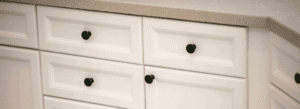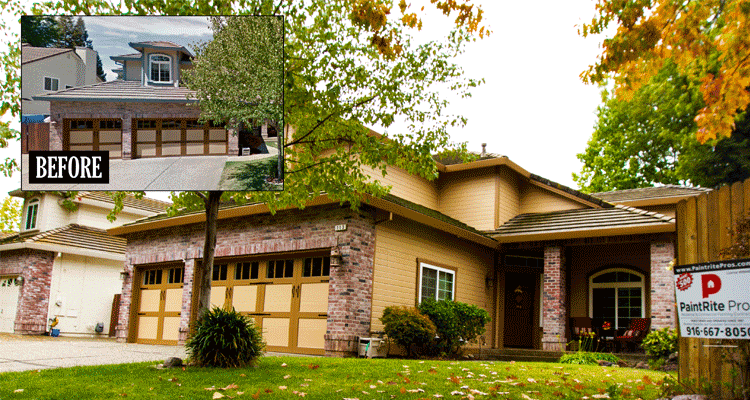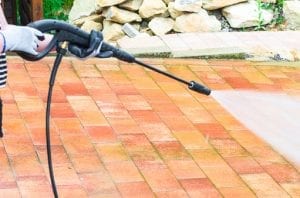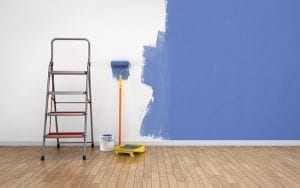Painting your fence can give you a fresh look to brighten up a space that has become dated and boring. Though you could opt to hire a professional, painting your fence is a DIY project you can complete in an afternoon or two. That being said, if you don’t have the time to paint it yourself and you live in Sacramento, contact us for a free estimate.
How Much Does It Cost to Paint a Fence?
Painting your own fence can mean a lot of mess for you to deal with. However, it is not a super difficult job for the average Joe to do. Best of all, there are great cost savings to be had if you decide to tackle the project yourself. In general, the cost of supplies for you to paint your own fence ranges from $500 to $700. By comparison, hiring a professional to get the job done will ring in at approximately $2,000.
Obviously, one of the largest differences between the two is the added labor cost incurred when employing a professional. However, painting professionals are able to work quickly and efficiently, ensuring no problems occur. Though their upfront cost is more expensive, you’re guaranteed an excellent result. We back up all our work with a stellar guarantee and warranty.
However, with a little bit of planning and some smart shopping, painting the fence yourself can be a breeze. The main thing you will need is the correct tools to get the job done.
Can You Paint a Vinyl Fence?
Armed with the right type of paint and the correct tools for adequate coverage, vinyl fences can easily be painted. Since vinyl coatings are designed to last, they very rarely require painting to maintain an attractive finish. However, if you feel it’s time for a change, painting your vinyl fence doesn’t have to be a painful chore. You can purchase paint supplies in Las Vegas at Dunn-Edwards Paints in Summerlin or similar places. If you live in the Sacramento area, you can find what you need at Jerry’s Paint and Supply.
The steps you should follow to successfully paint your vinyl fence include:
- Choosing the right primer, paint, and sealer
- Clean and prepare the fence for painting
- Purchase and apply the primer
- Apply the paint
- Apply the sealer
Can You Paint a Chain Link Fence?
Chain-link fences are built from metal and are designed to be rust repellent. Over time, you may discover that your fence could benefit from a little TLC. Painting your chain link fence is the perfect solution to restore your fence to its former glory.
Though a sprayer can be a good idea for some types of fencing, it’s a poor choice for a chain-link fence. A paintbrush is your best option for all fence posts and finials with a roller the best approach for the chain-link itself.
Primer will only be necessary if your fence is showing some signs of rust development. Otherwise, you’ll find you can simply clean the fence’s surface with a power washer. Any of the original paint that is flaking off the fence can be removed with a wire scrub brush. The surface will then be ready for you to begin painting.
You should take great care before any painting starts to trim all grass along the fence line. This ensures that all areas of your fence are properly coated.
The best tip we can offer you for painting a chain-link fence is to work slowly. This will help you prevent any splattering from occurring.
How to Paint a Fence with a Roller
If you think a roller is the best way to give your fence a coat of paint, you’ll want to be sure you have several on hand. The best idea is to purchase rollers of different sizes. Smaller rollers allow you to easily get into tight spots while larger rollers cover a greater surface area more readily.
Here are some tips to consider when using a roller to paint your fence:
Purchase the right “nap” for your fence
If you’re uncertain which type of nap is the best for your fence, you’ll want to ask a professional at your hardware store. In general, fences that are constructed from rough materials require a deep nap.
Consider a roller on a long handle
If your fence is tall, a long-handled roller will make covering the entire area a breeze.
Purchase paintbrushes in various sizes
Since rollers can’t get into some of the nooks and crannies in a fence, it is a good idea to have some paintbrushes on hand. We recommend purchasing both a 1” and a 3”.
Use a power washer to thoroughly clean the fence surface
Cleaning your fence prior to painting ensures all dirt and debris have been removed. It is also important to allow the fence to completely dry before moving to the next step of the process. Whenever we do any kind of paint job, we make sure to do all the prep work and clean up afterward. A good painting company will do those things for you.
Use tarps to protect your grass
Laying down tarps is an easy way to be sure your grass remains paint-free.
Use rollers and paintbrushes to apply paint
Rollers are best used to apply an even application of paint over large surface areas. Paintbrushes can then be employed to do any cutting in or to move inside tight places.
You’ll want to be certain to address any uneven coverage or drips right away. This will ensure your fence has a smooth, even surface of paint when dry.
If a second coat of paint is required, it’s important that you wait until the first covering is completely dry first.
How to Paint a Fence with a Sprayer
Want to paint your fence but find yourself short on time? Why not consider a paint sprayer?
A paint sprayer is a great solution for painting wooden fencing. It offers an even application of paint and allows you to cover a large surface area in a short amount of time. As an added bonus, paint sprayers offer even coverage, ensuring a beautiful finish when you’re done.
Here are some important things to bear in mind when painting with a sprayer:
Allow a “drying” time for new fences
For a newly constructed fence, you will need to wait two to five weeks prior to painting it. This allows any moisture to dry out.
Be mindful of the weather
The best conditions for painting are days that are sunny and dry. It’s also a good idea to avoid painting when there is wind to prevent splatter.
Consider the time of day
The more moderate early morning temperatures are ideal for painting with a sprayer.
Clean the fence surface prior to painting
You’ll need to be sure to thoroughly clean your fence prior to painting with a sprayer. Remove any dirt and debris, paying careful attention to things like spiderwebs. Make use of a brush if necessary to scrub the surface clean.
Once all dirt has been removed, you’ll need to allow the wood to dry completely prior to doing any painting. Previously painted fences should be sanded as well.
Use tarps to prevent splatter
To protect the grass and plants close to your fence, make use of tarps. This will prevent them from becoming coated in paint.
Because it is easy to inhale paint fumes, you’ll want to wear a mask while spraying paint.
Thin your paint
Since thick paint will clog the sprayer, you’ll need to dilute it approximately 5-10 percent prior to use.
Spray the paint
Be sure to follow the grain of the wood when spraying for an even application.
Allow drying
Be certain the paint has thoroughly dried before applying a second coat.
Thinking it’s time to give your fence a facelift? Follow our top tips for the best DIY painted fence on the block!




 Pressure washing before painting is a chance to remove all dirt, debris, and cobwebs before painting. It’s important to wash your house so that the new coat has the best chance to bond with the undercoat. By cleaning off all the gunk, we can make sure the paint goes on smoothly, not just rolling over dirt. It’s not just dirt, either. Oftentimes houses can have mildew on their siding. The only way to remove this mildew is washing off with bleach. Our bleaching solution will completely eliminate all mildew from the exterior of your home.
Pressure washing before painting is a chance to remove all dirt, debris, and cobwebs before painting. It’s important to wash your house so that the new coat has the best chance to bond with the undercoat. By cleaning off all the gunk, we can make sure the paint goes on smoothly, not just rolling over dirt. It’s not just dirt, either. Oftentimes houses can have mildew on their siding. The only way to remove this mildew is washing off with bleach. Our bleaching solution will completely eliminate all mildew from the exterior of your home. Paint is a cost-effective and dramatic way to refresh your home. But how often should you repaint interior walls? With just a few cans and professional help, you can completely revive the
Paint is a cost-effective and dramatic way to refresh your home. But how often should you repaint interior walls? With just a few cans and professional help, you can completely revive the  Stucco is a hard and rough material made of sand, cement (or other aggregates), and water mixed together. This durable material is often used in dessert-style homes and is popular in the Sacramento area. While most of the time stucco is on the
Stucco is a hard and rough material made of sand, cement (or other aggregates), and water mixed together. This durable material is often used in dessert-style homes and is popular in the Sacramento area. While most of the time stucco is on the  Looking for the best house painter in the Sacramento area? PaintRite Pros is the only painting company you need to call. Our dedication to customer service and passion for an excellent paint job make us the right choice for your home. We offer
Looking for the best house painter in the Sacramento area? PaintRite Pros is the only painting company you need to call. Our dedication to customer service and passion for an excellent paint job make us the right choice for your home. We offer